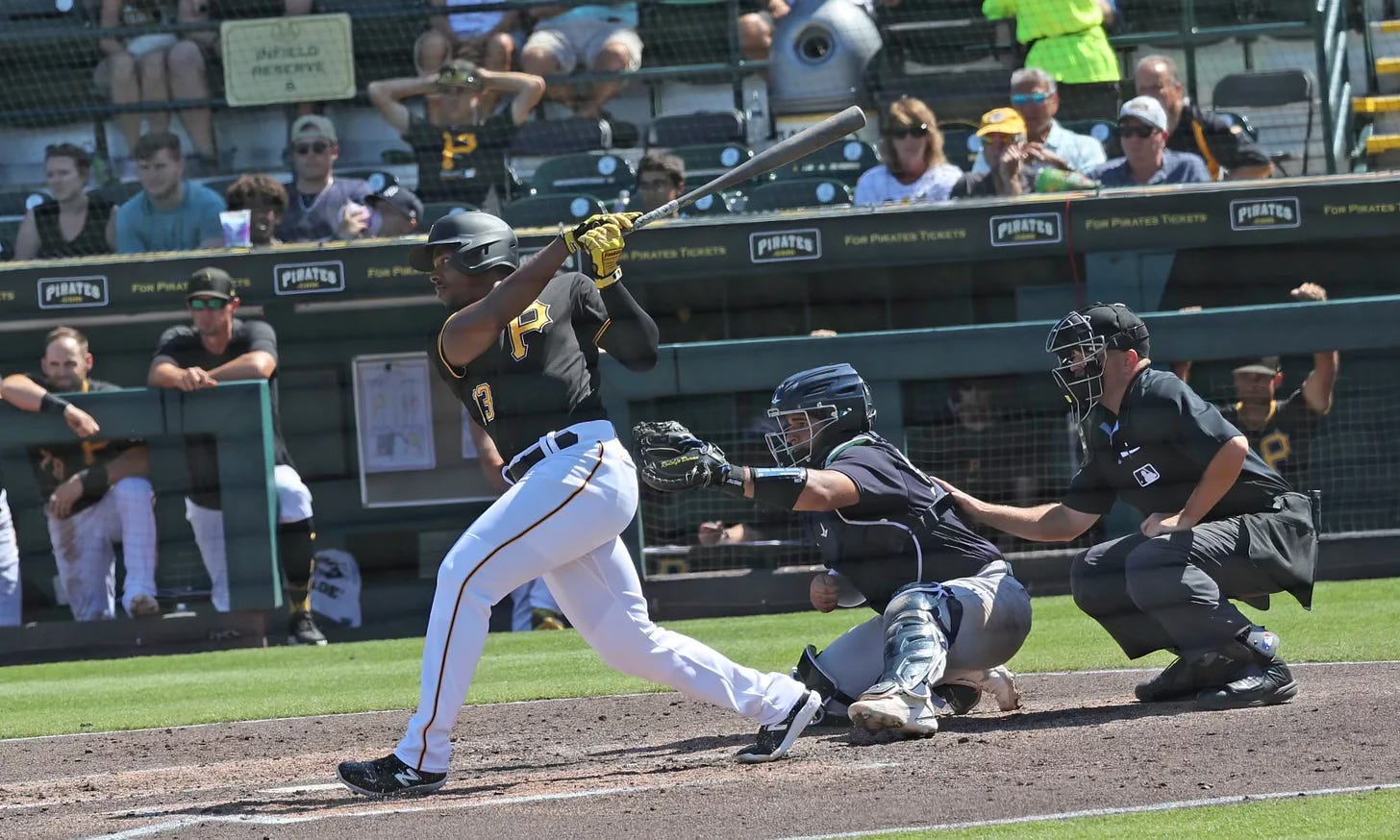At least I was much timelier this year.
After the inaugural pre-arbitration bonus pool was paid out in December 2022, it took me roughly 10 months to dive in and break it down. Reports were much easier to find this year, with the entire list being reported the same day Mark Feinsand of MLB.com reported payments had been made.
Breaking it all down this year will be a bit more fun, as I was able to compile and compare two years’ worth of data, but first, I’ll look at just this year’s results. For a deeper explanation of the entire endeavor, you can check my initial primer out here, since I’m just diving into the numbers today.
First off, $9.25 million was paid out in terms of award bonuses—$2 million less than last year—leaving $40.75 million to be distributed among the eleven award recipients, plus the remaining ninety players who also qualified.
A quick detour for those keeping track—yes, that is 101 players when only 100 are supposed to receive the bonus. My best guess—quite an educated one, based on the evidence—is that an interesting quirk has revealed itself just two years in.
Emmanuel Clase of the Cleveland Guardians was voted as an All-MLB 2nd Team reliever, giving him a $500,000 bonus; however, that was the only bonus he earned, with no additional monies on top of it. I take that to mean that Clase didn’t finish in the Top-100 of the league’s Joint WAR (jWAR) calculation, meaning he got his share for the award, but none of the remaining $40.75 million, thus the league had to include an extra player to split the funds to or 101 players in total.
Julio Rodríguez of the Seattle Mariners finished first in jWAR, accumulating a $865,349 bonus. Add that to the $1 million for his 4th place MVP finish, and he led the pack with his $1,865,349 payout.
Award bonuses certainly juice the total amounts awarded, with the Top-10 players receiving at least $500,000 in award funding and all finishing at over $1 million in bonus monies.
Number eleven was Bobby Witt Jr. of the Kansas City Royals, who at $836,848 was one of five players (Adley Rutschman, Baltimore Orioles; William Contreras, Milwaukee Brewers; Zack Gelof, Oakland Athletics; Davis Schneider, Toronto Blue Jays) to accrue more bonus money than total salary for the 2023 season.
Schneider wins the Joey Meneses Award for 2023, as he only had 141 plate appearances over 35 games, finishing 92nd in the pool with $265,673, $37,286 more than his 2023 salary.
On the opposite end of the spectrum, seven players on long-term contracts led the way in excess salary versus their award winnings. For the second year in a row, Ke’Bryan Hayes of the Pittsburgh Pirates was first, making $9,544,071 more in salary, with Andrés Giménez of the Guardians a distant second at $4,491,459. For this exercise, I counted signing bonuses and incentive payments as part of a player’s salary.
Speaking of Hayes, I should move on to the part that you’re probably interested in—if you even care about this, how did the Pirates fair?
The team had four representatives: David Bednar, Johan Oviedo, Jack Suwinski, and the afforementioned Hayes above. This is compared to the Orioles and Detroit Tigers, who finished first with seven players on the list, and the San Diego Padres, the only team with no player earning a bonus. There was a five-way tie for second with six players, while three teams had just one player make the list.
The Pirates’ representatives are as follows:
26. Hayes: $480,929
37. Suwinski: $405,720
64. Oviedo: $319,981
78. Bednar: $282,802
As part of a fun exercise to see how well I could project the pool, after the season ended I looked up every eligible player with a FanGraphs (fWAR) or Baseball Reference (rWAR) WAR of at least 1.3, which I then averaged out to a final Average WAR (aWAR). This left me with a pool of 158 players, the top 100 of which I ranked as part of my projection.
I ended up with 87 of the final 101 ranked players, with the 14 I missed still showing up in the group of 158.
Based on my aWAR projection, Jared Triolo was one of the 14 players I had predicted—83rd at 1.9 aWAR, to be exact—who did not make the final cut.
Two players were ranked at least 50 spots higher than my projection, with Jake Rogers of the Detroit Tigers (46 versus 115) and Elly De La Cruz of the Cincinnati Reds (89 versus 140) the jWAR darlings, while FanGraphs and Baseball-Reference were bigger proponents of the Reds’ Spencer Steer (97 versus 42) and the New York Yankees’ Anthony Volpe (101 versus 41).
While that covers 2023, what about the two years in total?
Between 2022 and 2023, 171 players have received a bonus as part of the new program. Of course, some players were eligible in 2022 but not 2023, and vice versa, as well as players who were eligible both years but didn’t qualify in one or the other.
As far as total bonuses go, Julio Rodríguez leads the way with $3,416,199, buoyed by $1.75 million in award bonuses. Five other players have surpassed $2 million, with Adley Rutschman ($2,975,994), the Atlanta Braves’ Spencer Strider ($2,770,127), and Toronto Blue Jays’ Alek Manoah ($2,191,023) still eligible for the pool in 2024—along with Rodríguez. Another 16 players have surpassed $1 million in total earnings.
Comparing bonuses to salary, two players stand out, with Rutschman ($1,711,325) and Strider ($1,060,127) both earning more in bonuses than total salary over the two years. Of course, both have awards to thank for that, as do every other player in the category—of the 16 players to have earned more in bonuses than salary, there are none who earned bonuses in both years that did not win an award in at least one of the years.
As mentioned earlier, Hayes is the biggest gap between the categories two years running, making him the largest difference, at $19,152,740 more in salary than bonus. Thanks to a $15,300,000 signing bonus last year, Rodríguez is second at $16,658,801.
Seven other players outearned their bonuses by at least $2 million, all of which are due to long-term contracts.
This is an interesting topic to close on, as these differences are stark, potentially leading one to question just why such players are still eligible for bonuses. Ken Rosenthal of The Athletic addressed this after the list was reported, stating that the players wanted to disqualify those on long-term contracts to “help discourage (players) from signing below-market extensions.” No reason for the league’s opposition was stated, other than their belief that “a player who earns a bonus should receive it, regardless of contractual status”. It’s possible the inverse of the players’ hopes is true for the league—they would have no interest in deterring players from signing what are often considered team-friendly deals.
Despite such big discrepancies looking kind of funny, it’s possible that such rules disqualifying certain players could be hard to draft, with Rodríguez a perfect example. He signed his extension in August 2022 that was due to kick in the following year; however, his signing bonus was to be paid within 60 days—or during the 2022 season. Determining whether he—or other players who sign midseason, like Hunter Greene or Michael Harris II—should have qualified could be a tough call.
While Rosenthal calls any changes during the current agreement “extremely unlikely,” it’s certainly possible that this aspect of the program is re-evaluated come 2027.






I had to laugh because there are . . . uh . . . certain people out there who think anybody can do this.
Not sure whether this has been noted here, but BA has an updated list of the top 50 expected int'l bonuses. Note that they're listed in order of bonus amount, not expected talent. The Pirates have two, both of which I think we've heard about.
12. Brailyn Brazoban, OF. Power/speed guy, good arm, expected to stay in CF. Uncertain about the hit tool.
34. Abdiel Feliz, SS. Flashy, glove-first guy. Hit tool is "solid . . . for his age," but he's a slap hitter.